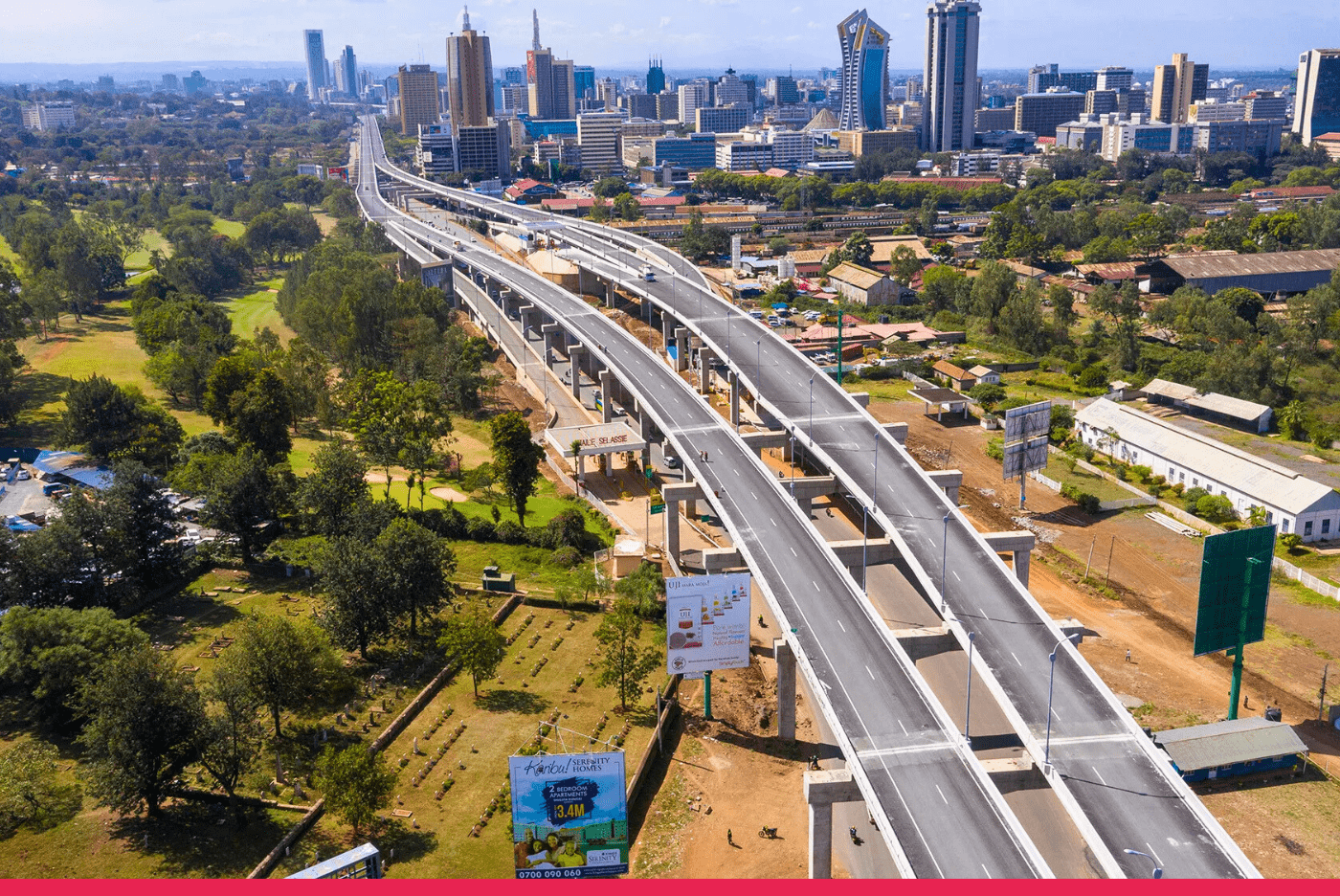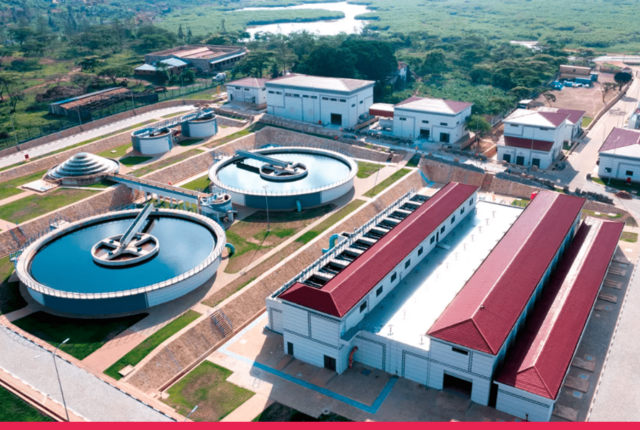
Case Study: The Nairobi Expressway (Kenya) PPP Project – Replicable Success Factors
Africa’s infrastructure gap, estimated at $100 billion annually (AfDB), demands innovative financing like Public-Private Partnerships (PPPs). The Nairobi Expressway, a $668 million flagship PPP in Kenya, completed in 2022, exemplifies success by easing Nairobi’s notorious traffic congestion. Stretching 27 kilometers, it serves 50,000 vehicles daily, cutting travel time from two hours to 20 minutes (KeNHA). This case study analyzes the project’s structure, financing, risk allocation, and implementation, highlighting success factors—government commitment, clear scope, stakeholder engagement, and risk mitigation. It offers replicable lessons for projects like the $25 billion LAPSSET Corridor, addressing pain points for investors, policymakers, and communities with actionable insights for sustainable African infrastructure.
Overview of The Nairobi Expressway (Kenya) PPP Project
Nairobi, Kenya’s capital with 5.3 million residents (2022), faces severe traffic bottlenecks, costing 2% of GDP annually (World Bank). The Nairobi Expressway, a 27-km, four-to-six-lane dual carriageway, connects Westlands to Jomo Kenyatta International Airport (JKIA). Launched in 2019 and operational since 2022, it’s Kenya’s first tolled expressway under a PPP. Managed by China Road and Bridge Corporation (CRBC) via Moja Expressway Company, it aligns with Kenya’s Vision 2030 and AfCFTA trade goals, enhancing regional connectivity.
Project Structure and Implementation
Structure
The project operates as a Build-Operate-Transfer (BOT) PPP with a 27-year concession. Key components include:
- Infrastructure: Elevated sections (11.6 km), at-grade roads (15.4 km), 12 interchanges, and toll plazas with ETC systems.
- Contractual Framework: A performance-based agreement between KeNHA and CRBC, aligned with Kenya’s 2021 PPP Act.
- Stakeholders: Government of Kenya (GoK), CRBC, KeNHA, AfDB (advisory), and local communities.
Financing
The $668 million project blended public and private funds:
- Private Capital: 80% ($534 million) from CRBC, leveraging China’s Belt and Road expertise.
- Public Funding: 20% ($134 million) from GoK, covering land acquisition and oversight.
- Debt Financing: China Exim Bank provided loans, with toll revenues servicing debt over 27 years.
This model reduced fiscal strain, unlike LAPSSET’s 80% funding gap (AfDB).
Risk Allocation
Balanced risk-sharing ensured stability:
- Construction Risk: CRBC bore cost overruns, completing the project 10 months ahead of schedule.
- Revenue Risk: GoK guaranteed minimum toll collections, stabilizing CRBC’s returns.
- Political Risk: AfDB’s advisory role and Kenya’s PPP Act mitigated regulatory uncertainties.
Challenges like land acquisition were managed via early compensation, unlike LAPSSET’s ongoing Lamu disputes (Oxfam, 2022).
Implementation
Implementation leveraged Kenya’s PPP framework:
- Stakeholder Engagement: Over 80 community forums addressed concerns, reducing protests (KeNHA).
- Capacity Building: Training for 1,000 local workers, with 30% retained post-construction (CRBC).
- Technology: Electronic Toll Collection (ETC) systems cut operational costs by 25% (KeNHA).
Completed on time and budget, the project contrasts with 40% of African PPPs facing delays (World Bank).
Key Success Factors
Strong Government Commitment
GoK’s 2021 PPP Act and tax incentives signaled reliability, attracting CRBC’s $534 million investment. This contrasts with Nigeria’s railway delays due to weak policy (AfDB). Kenya’s 38th global ranking for ease of doing business (World Bank, 2020) bolstered confidence.
- Lesson: LAPSSET needs consistent enforcement of the PPP Act to attract $20 billion in private capital.
Clear Project Scope
The focused scope—27-km expressway with defined interchanges—avoided overambition. Detailed feasibility studies ensured clarity, unlike LAPSSET’s sprawling scope (Vision 2030).
- Lesson: LAPSSET should prioritize Lamu Port to accelerate progress.
Effective Stakeholder Engagement
Extensive consultations with communities and businesses built trust, unlike LAPSSET’s 30% Lamu dissatisfaction (Oxfam, 2022). Kenya’s approach mirrors Ghana’s e-Government PPP, with 100+ meetings (World Bank).
- Lesson: LAPSSET must expand its 50+ Lamu forums to Isiolo and Turkana.
Robust Risk Mitigation
Blended financing and AfDB’s involvement reduced risks. Competitive bidding ensured transparency, unlike LAPSSET’s funding challenges (AfDB). The PPP Act’s legal framework aligned with IFC standards.
- Lesson: LAPSSET needs DFI partnerships, like AfDB, to secure funds.
Results and Impact
Since 2022, the Nairobi Expressway has:
- Reduced Travel Time: Cut JKIA-Westlands transit from 2 hours to 20 minutes (KeNHA).
- Boosted Economy: Generated $50 million in toll revenue annually, supporting debt repayment (CRBC).
- Created Jobs: Employed 3,500 during construction and 500 permanently, with 40% local hires (KeNHA).
- Enhanced Trade: Improved logistics, supporting AfCFTA’s 30% trade growth target (UNECA).
These outcomes align with LAPSSET’s trade facilitation goals for Lamu Port.
Lessons Learned and Best Practices
Lesson 1: Blend Financing Strategically
The 80:20 private-public funding mix minimized fiscal strain. LAPSSET can adopt AfDB’s $750 million green bonds to close its funding gap (AfDB).
Lesson 2: Strengthen Governance
Kenya’s PPP Act ensured investor confidence, unlike Ghana’s weaker guidelines (ResearchGate). LAPSSET needs similar legal clarity.
Lesson 3: Engage Stakeholders Early
Community forums prevented disputes, a practice LAPSSET can scale to address Lamu’s protests (Oxfam). The Expressway’s model aligns with Benin’s water PPPs (World Bank).
Lesson 4: Leverage Technology
ETC systems boosted efficiency, a strategy LAPSSET’s planned fiber optics can replicate (Vision 2030).
Applying Lessons to LAPSSET and Beyond
LAPSSET’s ambitious scope—ports, roads, pipelines—faces funding, community, and risk challenges. The Nairobi Expressway’s lessons offer a roadmap:
- Government Commitment: Enforce the PPP Act to attract investors, as Kenya did with CRBC.
- Clear Scope: Focus on Lamu Port, mirroring the Expressway’s targeted approach.
- Stakeholder Engagement: Expand forums to all LAPSSET regions, learning from Kenya’s 80+ meetings.
- Risk Mitigation: Secure DFI funding, like the Expressway’s AfDB support, to cover LAPSSET’s shortfall.
These practices can guide other PPPs, like Uganda’s Kampala-Entebbe Expressway, ensuring sustainable outcomes (Dentons).
Challenges and Opportunities
Challenges
- Capacity Gaps: Only 15% of African officials are PPP-trained, risking errors (AfDB).
- Community Pushback: Initial Expressway resistance, like LAPSSET’s Lamu protests, required engagement (Oxfam).
- Funding Risks: Reliance on foreign loans, as with CRBC, mirrors LAPSSET’s challenges (AfDB).
Opportunities
- Regional Models: AU’s PIDA can replicate the Expressway’s success, boosting FDI by $23 billion (PwC).
- Digital Tools: E-procurement enhances transparency, as in Kenya (KIPPRA).
- ESG Investment: $53 trillion in ESG funds by 2025 favor well-governed PPPs (UNDP).
Actionable Advice for Stakeholders
- Policymakers: Strengthen PPP laws, aligning with IFC standards.
- Investors: Back projects with strong governance, like the Expressway, ensuring ESG compliance.
- Businesses: Engage in training to win contracts, as 40% of Expressway hires did.
- Communities: Join forums to shape projects, as Nairobi residents did.
FAQ: The Nairobi Expressway (Kenya) PPP Project
Q: What made the Expressway successful?
A: Government support, clear scope, engagement, and risk mitigation (KeNHA).
Q: How can LAPSSET apply these lessons?
A: Streamline scope, boost engagement, and secure DFI funding, as the Expressway did (AfDB).
Q: What’s the biggest PPP challenge?
A: Capacity gaps—only 15% of officials are trained (AfDB).
Conclusion: A Roadmap for Africa’s Infrastructure
The Nairobi Expressway (Kenya) PPP Project proves PPPs can transform African infrastructure. Its success—driven by government commitment, clear scope, engagement, and risk mitigation—offers a replicable model for LAPSSET and beyond. By applying these lessons, stakeholders can address Africa’s infrastructure gap while fostering growth. Share this post, subscribe for more, or explore PPP opportunities today—Africa’s future starts with you.



Leave a Reply